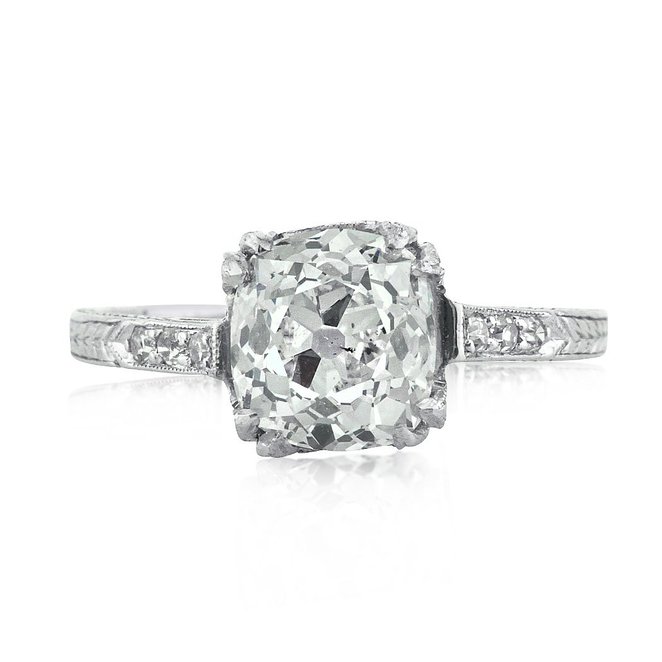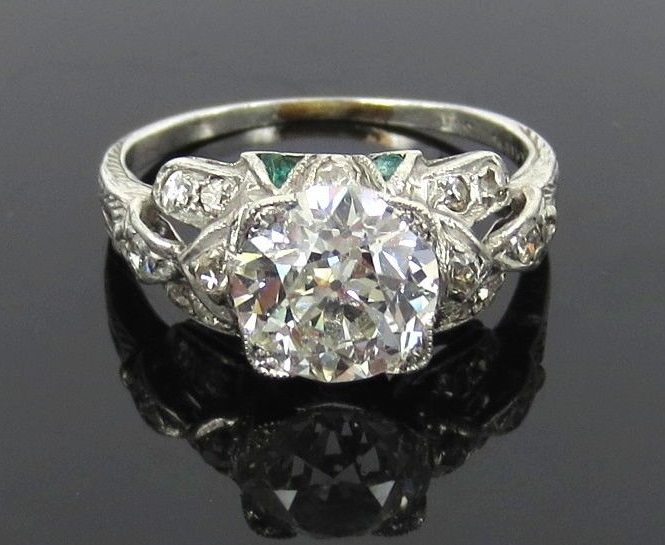
“Like detectives, diamond experts rely on descriptions and images of jewelry in old paintings, catalogs, and diaries to understand what the first cut diamonds looked like.”
Over the past few years there has been a marked increase in the purchase of old cut style diamonds. We more and more often deal with questions from consumers who are considering both newly minted old style cuts and authentic old cut diamonds. Of course, the diamond material is hundreds of thousands of years old anyway, but there are those who wish to go “new” or “old” and those who just want the old look. A further layer of unknowns crop up when a client wants to differentiate from an unrestored old cut from an old looking stone that may have been more recently repaired or lightly modified for one of several reasons. Then, there are those people looking for all the best look of an old cut in a newly minted old looking diamond, which has the high light return features available utilizing more recent diamond cutting knowledge and techniques that did not exist a 100 years ago.
Cuts and settings for gems and diamonds have changed as much in the history of antique jewelry as the political and social landscape of the centuries has. Well into the early 19th century all antique diamonds were hand cut and polished. Technology and the machines capable of near perfection were not yet available. Thus, antique diamonds are known for the fact that each one is slightly different in shape and, often, facet size and shape. Only in recent generations have we sought out diamonds with perfect facet structures and shapes possible only by means of our modern equipment and technology. Yet, antique diamonds often possess brilliance, life and character with which no modern diamond can compare.
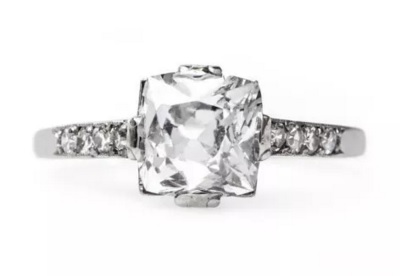
Old mine cut diamonds were a form of brilliant cut with a variety of facets structures, and with the outside perimeter being out-of-round often more square or rectangular in shape. Again, being all hand cut without the use of precise machines, each one is as individual as the people who cut them. Old mine cuts are often seen in 18th and 19thcentury in Georgian and Victorian jewelry. Key features include an open culet and a small table. Often they have an open culet where the facets come together at the bottom and leave a small flat surface.
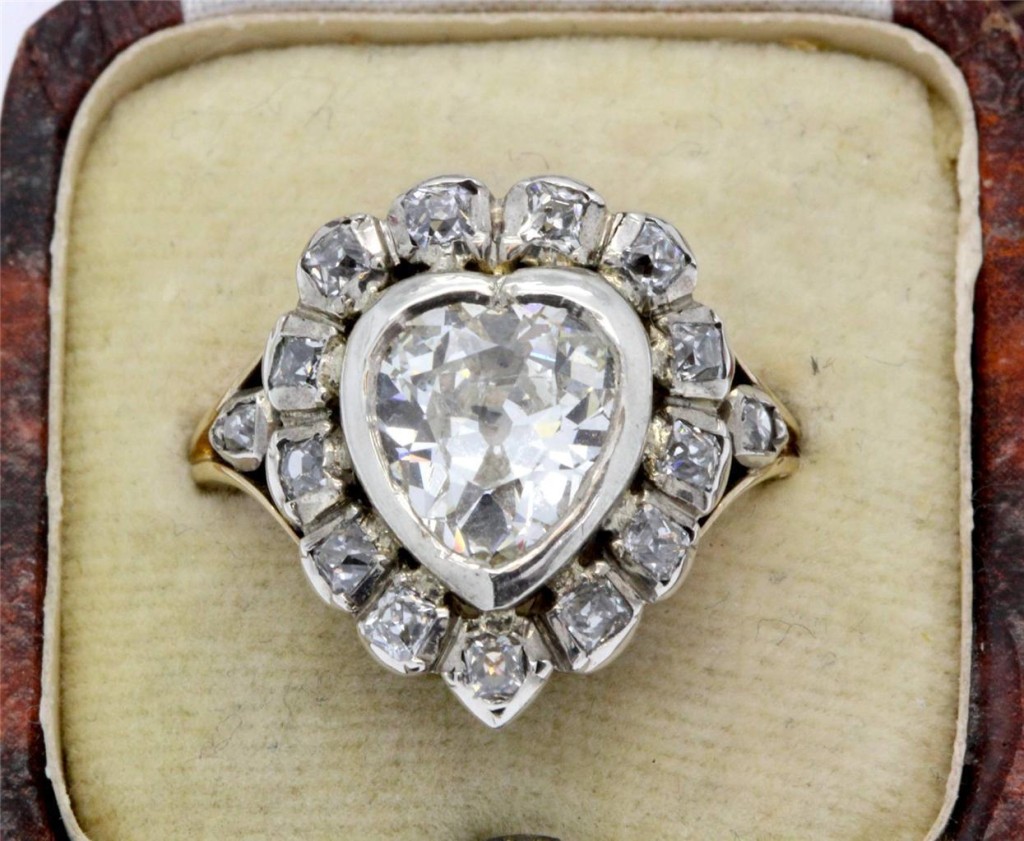
The term ‘Old Mine Cut’ applies to many of the diamonds cut before the 18th Century. Before the process of bruting, many of the diamonds assumed a square shape, appearing like the forerunner of the Cushion Cut. Diamonds possessed a polished culet and were far deeper than modern cuts. Old European cuts presented a far rounder shape, with a differing arrangement of facets. Some Old Cut diamonds are sometimes called ‘Victorian Cut’ and many have tell-tale features

Original Mid 1800s French Cut Diamond EGL Certificate
Old European cut diamonds are a form of brilliant cut diamonds with a variety of facets – usually fifty eight (58) with the key features of a small table, an open culet and a round perimeter or shape. The invention of the power driven bruting machine (patented in 1891) allowed the girdle (or perimeter) to be round rather than irregular. Unlike the old mine diamonds, these are closer to what we see today in modern diamonds.
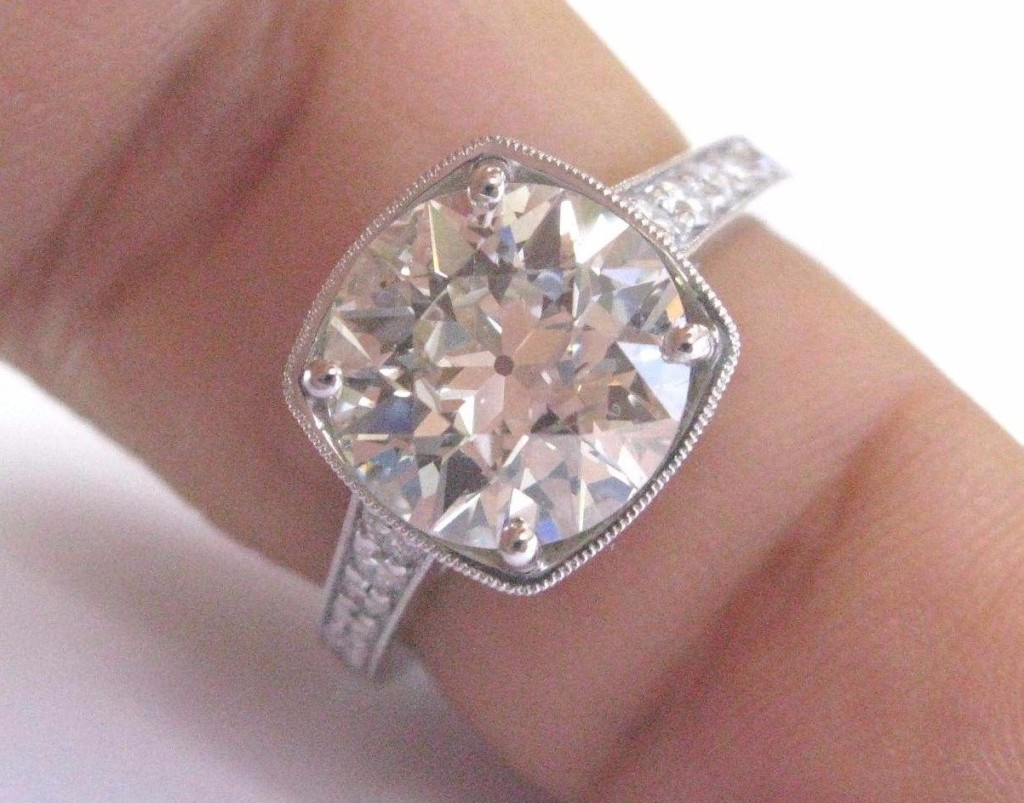
There are many other cuts of diamond which could be labelled as older cuts. Many of the diamond cuts give evidence of how the cutting process developed. One of the other styles, encountered in antique pieces of jewellery is the Rose Cut. This type of diamond cut is worth a mention here, since it does crop up from time to time. The Rose Cut can be single or double (flat on one side or faceted on both sides.) Some smaller examples are more like diamond chips, with little detail. Beautiful examples of larger Rose Cut diamonds can be found. Many provide very large spreads owing to the shallow cut producing larger than typical proportions. Such diamonds allow most of the light to pass through the stone, without the same brilliance, and refraction from modern diamond cuts.
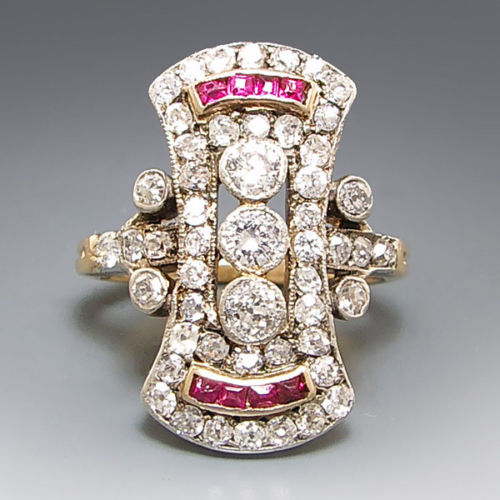
Today, lasers are used to cut diamonds to precise specifications in mass quantities. However, before modern diamond cutting technology was invented, diamonds were all cut individually by hand! The Old Mine Cut diamond is an early version of the Round Brilliant Cut diamond, which is by far the most popular diamond cut for newly-made engagement rings today. The Round Brilliant Cut diamond is loved around the world because of its amazing ability to sparkle and shine brighter than any other cut. However, Old Mine Cut diamonds are loved for their unmistakably vintage, hand cut quality that you can see with just a glance. This classic cut was always done individually by hand with hand made tools, so every Old Mine Cut diamond is truly one-of-a-kind. Ring settings were then designed for each Old Mine Cut diamond after it had been cut, so each engagement ring featuring this vintage cut is truly unique!

